Introduction To Sheep And Their Importance
Sheep are domesticated animals that are commonly raised for their wool, meat, and milk. They are found all over the world, from Australia to Africa to the United States. Sheep have been an important part of human civilization for thousands of years, providing sustenance and raw materials for clothing and other uses.
There are over 1 billion sheep in the world, with different breeds suited for different purposes. Some breeds are raised primarily for meat, others for wool, and some for both. Sheep are known for their docile nature, and they can be easily managed in a flock. Their grazing habits also make them useful for maintaining pastures and other open land.
The importance of sheep in human society cannot be overstated. In many cultures, sheep have played a significant role in religion, and they have also been used in art, literature, and folklore. They are even featured in the zodiac, as the astrological symbol for the sign of Aries.
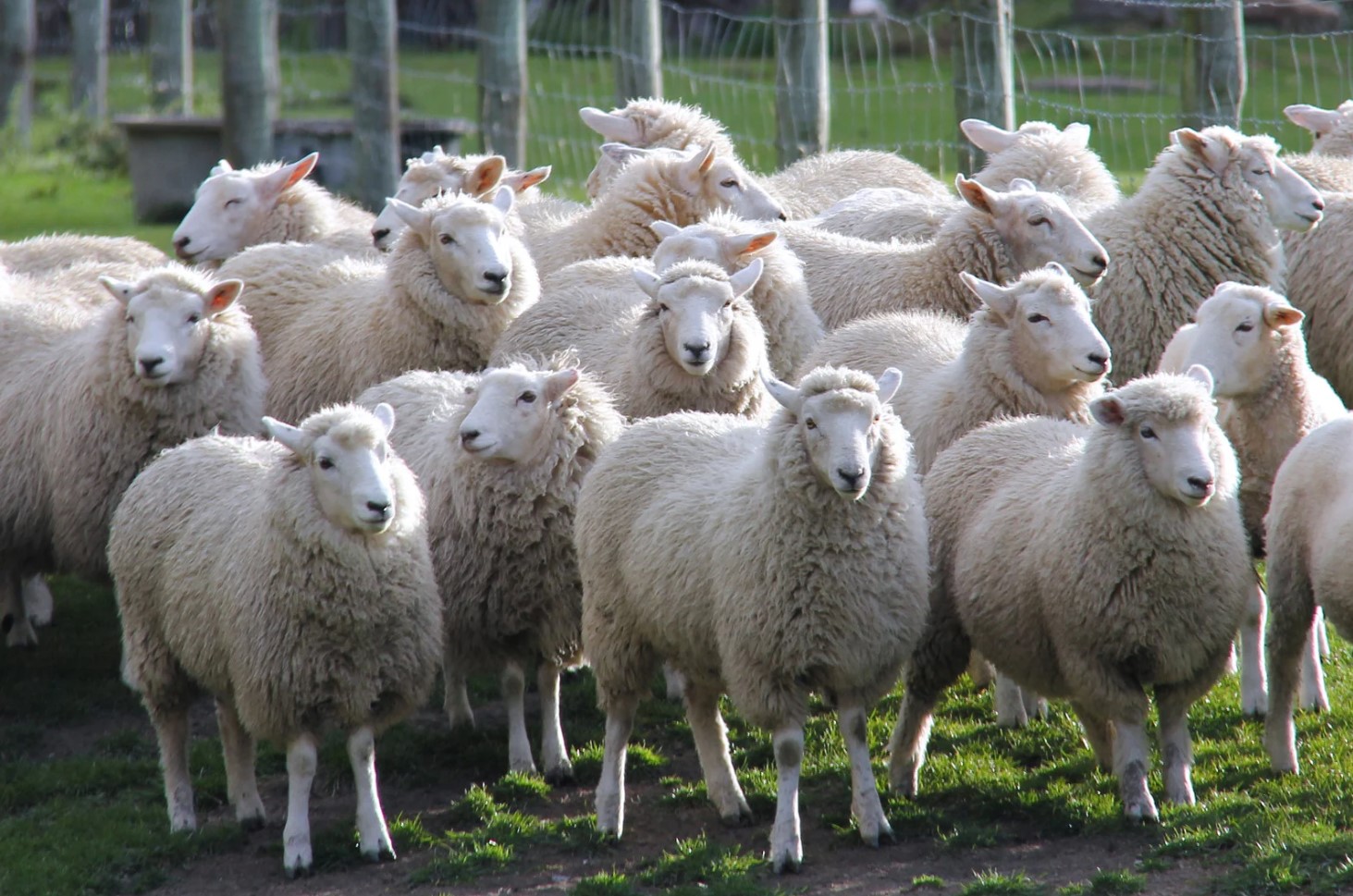
- Sheep are known for their docile nature.
- They can be easily managed in a flock.
- Their grazing habits make them useful for maintaining pastures and other open land.
Sheep are an integral part of many rural economies. As a source of meat, wool, and milk, they provide jobs and revenue for farmers and other businesses. The global demand for sheep products is on the rise, making sheep farming a promising industry for those interested in agriculture.
| Product | Uses |
|---|---|
| Wool | Clothing, blankets, rugs, and other textiles |
| Meat | Food, leather, and other byproducts |
| Milk | Cheeses, yogurts, and other dairy products |
In conclusion, sheep have been part of human civilization for thousands of years, providing sustenance and raw materials for clothing and other uses. They are an important part of many rural economies today, and their global demand is on the rise. Whether raised for meat, wool, or milk, sheep are a valuable resource for farmers and businesses alike.
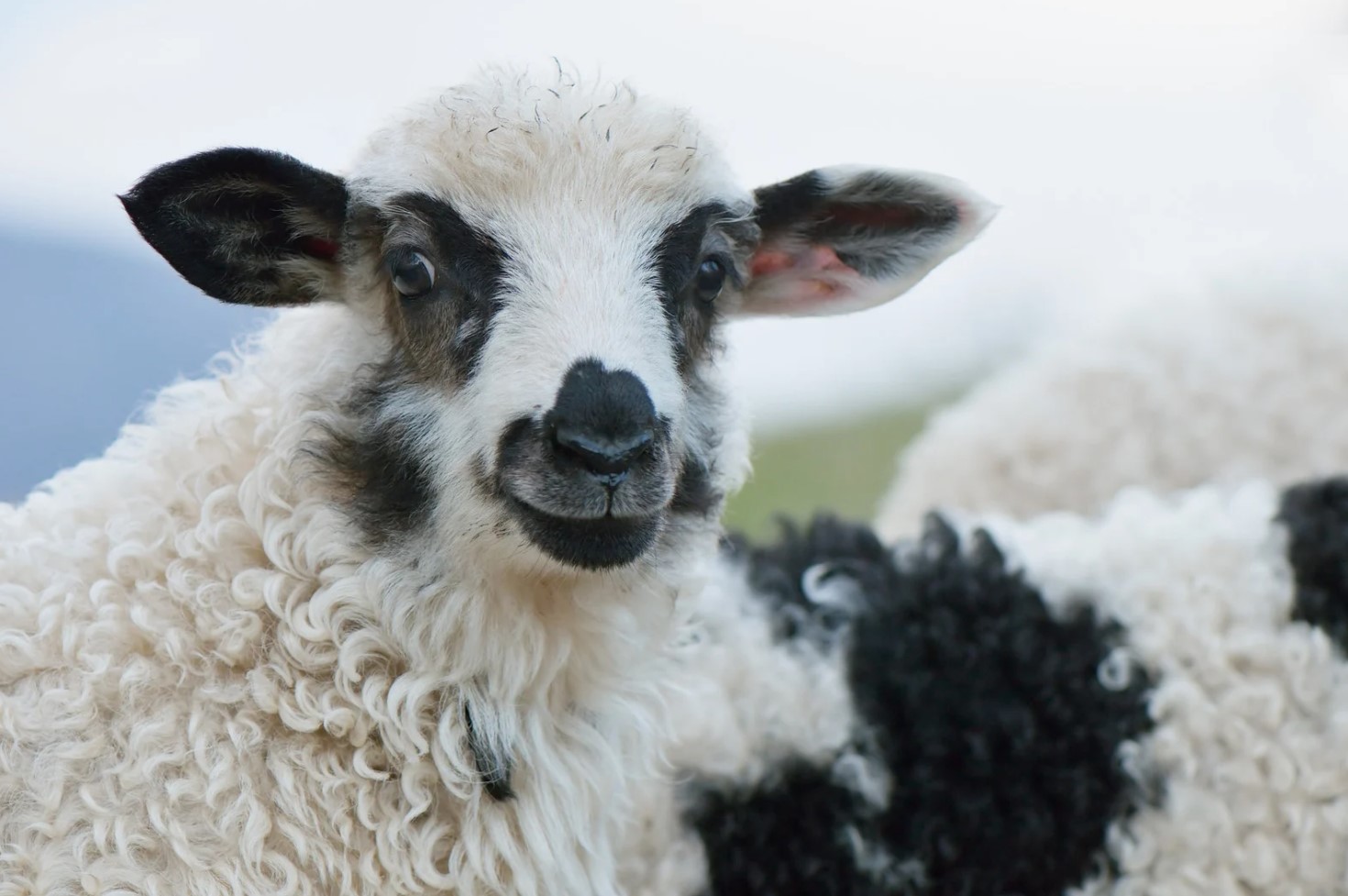
Common Types Of Domestic Sheep
Domestic sheep come in various breeds and types, each with its distinct characteristics and qualities. Knowing about these breeds is essential for anyone interested in sheep farming, animal husbandry, or just curious about sheep. In this blog post, we will discuss the common types of domestic sheep that are popular around the world.
1. Merino Sheep: One of the most common sheep breeds in the world, the Merino is known for its soft and fine wool. They are originally from Spain and are now bred extensively in countries like Australia, South Africa, and Argentina. Merino wool is in high demand for clothing and textile industries due to its high-quality fiber.
2. Dorset Sheep: Originating in England, Dorset sheep are popular for meat production. These hardy and adaptable sheep can be raised in different climatic conditions and have a good growth rate. They are also used for cross-breeding, and their wool is used in the textile industry.
3. Cheviot Sheep: This breed is originally from Scotland and is characterized by its white face and legs. They are hardy and resist harsh weather conditions, which makes them suitable for grazing in rough terrain. They are also used for meat production and are known for their lean and flavorful meat.
- Other common types of domestic sheep include:
- Rambouillet Sheep
- Columbia Sheep
- Southdown Sheep
- Hampshire Sheep
4. Rambouillet Sheep: Bred extensively in the United States, Rambouillet sheep have fine wool and good meat quality. They were originally exported from Spain and are now one of the most common breeds in the US. Rambouillet sheep are also used for grazing and are known to adapt well to different environments.
5. Columbia Sheep: Developed in the 1900s, Columbia sheep are a crossbreed between Rambouillet and Lincoln sheep, two other breeds known for wool and meat production. Columbia sheep produce medium-grade wool and quality meat, making them popular for commercial farming.
| Breed | Origin | Characteristics |
|---|---|---|
| Dorset | England | Meat |
| Merino | Spain | Wool |
| Cheviot | Scotland | Meat, grazing |
| Rambouillet | Spain | Wool, meat, grazing |
| Columbia | United States | Wool, meat |
In summary, domestic sheep have been bred for specific characteristics such as wool, meat, or grazing. These common types of domestic sheep are popular worldwide and offer various commercial and subsistence opportunities. Whether you’re a farmer or enthusiast, knowing about the different breeds will help you make informed decisions about animal husbandry and management.
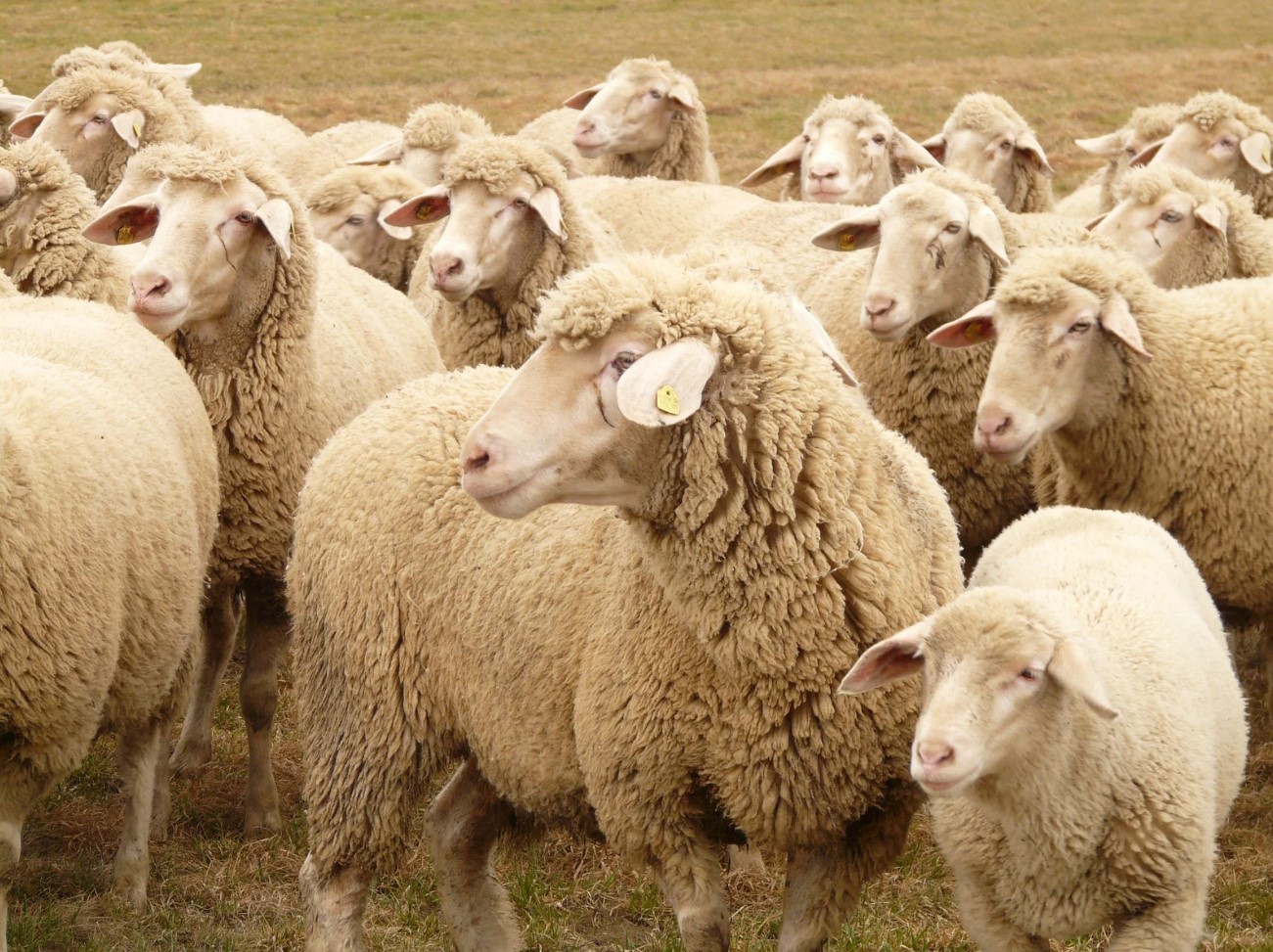
Wild Sheep Of The World
Wild Sheep Of The World
Sheep are one of the earliest domesticated animals, and they have played an important role in human civilization for thousands of years. But did you know that there are also wild sheep that can be found all over the world? From the grasslands of Africa to the rugged mountains of Asia, wild sheep are some of the most adaptable and resilient animals on the planet.
One of the most well-known types of wild sheep is the bighorn sheep, which can be found in the western United States and Canada. These majestic animals have large, curved horns that can weigh up to 30 pounds, and they are known for their impressive ability to climb steep cliffs and rocky terrain. In fact, bighorn sheep are so surefooted that they can navigate slopes with a vertical drop of 60 degrees or more!
Another type of wild sheep is the Barbary sheep, also known as the aoudad. This species is native to North Africa, and is well adapted to the hot, arid conditions of the Sahara desert. Barbary sheep have a unique adaptation that helps them survive in these extreme conditions: their bodies can absorb and store large amounts of water, which allows them to go long periods of time without drinking.
- There are many other species of wild sheep as well, ranging from the argali of Central Asia to the mouflon of Europe.
- Despite their different habitats and adaptations, all wild sheep share certain characteristics.
- They are all herbivores, and they use their specialized teeth and jaws to grind tough plant material into digestible pulp.
Finally, it is worth noting that many wild sheep populations are under threat. Habitat loss, hunting, and climate change are all taking a toll on these valuable and important animals. It is up to all of us to take action to protect and conserve wild sheep populations around the world, and to ensure that they can continue to thrive for generations to come.
History Of Domesticating Sheep
Sheep have been domesticated for thousands of years and have played a significant role in human history. Domesticating sheep allowed early humans to take control of their food sources, and was crucial in the development of agriculture. The earliest evidence of sheep domestication dates back to around 9000 BC in the areas of modern-day Turkey and Iraq.
The first domesticated sheep were likely wild mouflon, which were selectively bred for traits such as wool production, size, and temperament. As humans began to rely more and more on sheep for food, wool, and milk, they developed different breeds of sheep that were better suited to their needs. Some of the most common breeds of domestic sheep include Merino, Dorset, and Suffolk.
- Merino sheep are known for their fine wool and are often used in clothing production.
- Dorset sheep are bred for their meat and wool, and are commonly used for both.
- Suffolk sheep are large and muscular, and are primarily used for meat production.
The domestication of sheep also played a significant role in human culture and religion. Sheep were often used as sacrificial animals in ancient cultures, and are mentioned frequently in the Bible and other religious texts. In addition, wool and other sheep products were used to create clothing, blankets, and other items, which helped humans survive in colder climates.
| Advancements in domesticating sheep |
|---|
| Over time, humans continued to selectively breed sheep for specific traits, such as wool quality, color, and resistance to disease. |
| In the 18th and 19th centuries, advancements in breeding techniques led to the creation of new breeds such as the Rambouillet and the Lincoln. |
| Today, there are hundreds of breeds of domestic sheep, each with their own unique characteristics and uses. |
Overall, the history of domesticating sheep has had a significant impact on human development and culture. From providing food and clothing, to serving as sacrificial animals and religious symbols, sheep have played an important role in shaping human history.
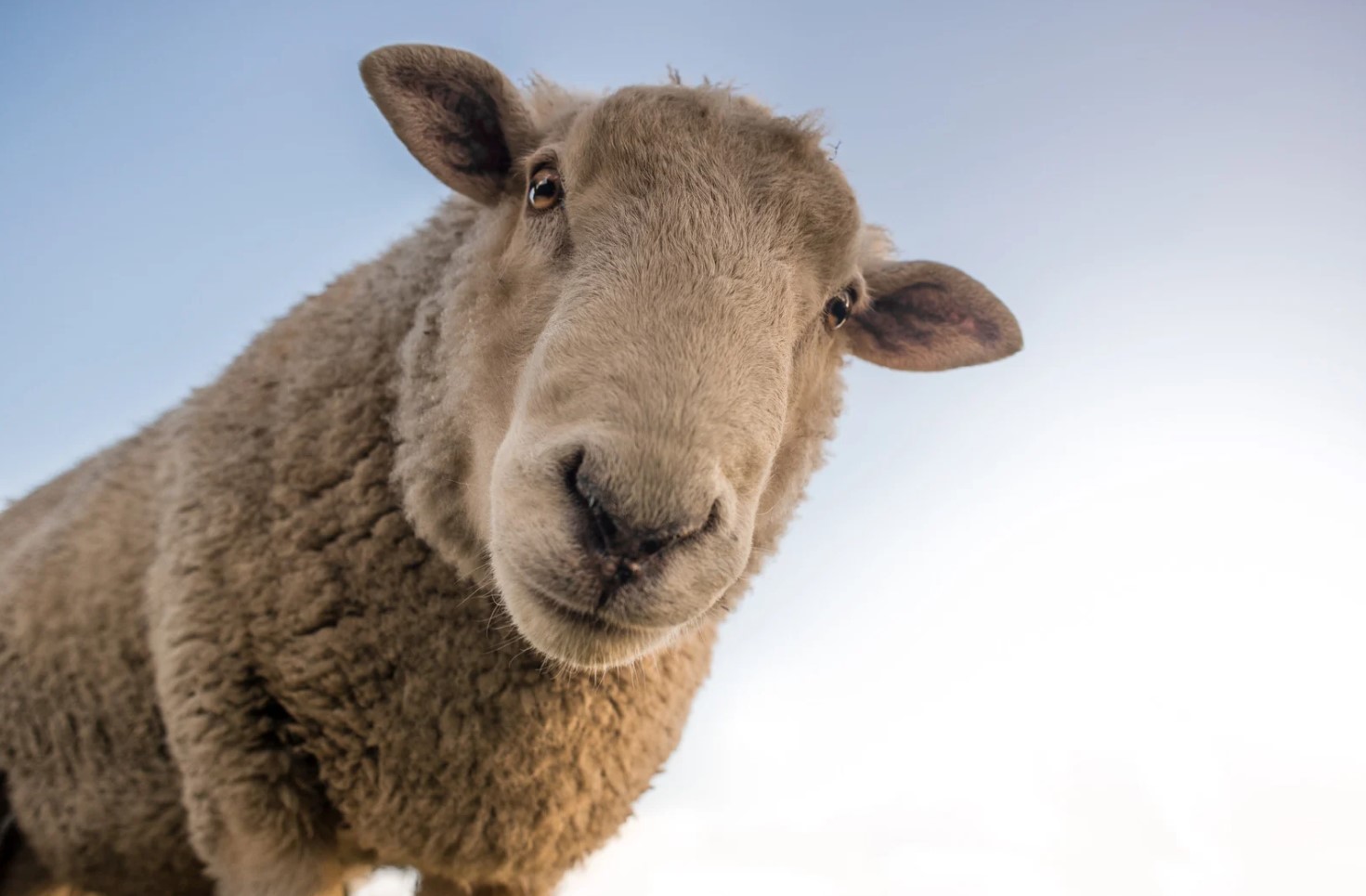
Evolution And Anatomy Of Sheep
Sheep have evolved over the course of thousands of years to become the animals we know today. They are believed to have originated in the Middle East and Central Asia, and were domesticated by humans around 10,000 years ago. Since then, they have been bred for various purposes, such as wool and meat production, and have even been used for milk and dairy products.
The anatomy of sheep is unique in its own way. They have a complex digestive system that allows them to break down and extract nutrients from tough plants. They have four-chambered stomachs that enable them to efficiently digest a wide range of vegetation. Their wool, which is sheared once a year, is made up of a protein called keratin, and is used for various items such as clothing, blankets, and carpets. Another interesting fact is that sheep have a keen sense of hearing and smell, but their eyesight is not well developed.
- Sheep are also known for their versatile nature, and they can adapt to almost any climate and environment. They are able to stand up to harsh weather conditions and live in rugged terrain.
- Female sheep, known as ewes, have a gestation period of around five months, and typically give birth to one or two lambs at a time. Lambs are born with a fleece, which protects them from the cold, and they usually start to graze within a few days of being born.
| Animal | Gestation period | Average size of litter |
|---|---|---|
| Sheep | 5 months | 1-2 lambs |
| Cows | 9 months | 1 calf |
| Pigs | 3 months, 3 weeks, and 3 days | 8-12 piglets |
Despite their many uses, the future of sheep is uncertain due to various factors, such as climate change and industrialization. However, initiatives are being taken to ensure their conservation and sustainability in the coming years. We need to understand and appreciate these animals for all that they provide us with, and work towards maintaining their importance in our society.
Nutritional Requirements Of Sheep
As with any living creature, sheep require essential nutrients to keep them healthy and thriving. Proper nutrition is crucial for growth, reproduction, milk production, and wool production. Farmers and ranchers must have a basic understanding of the nutritional requirements of their sheep to ensure their animals receive the proper diet to support their health and productivity.
- Protein is a critical nutrient for sheep, as it’s essential for growth and maintenance. It can be found in animal products such as fishmeal, meat meal, and bone meal or in plant-based sources such as soybean meal and cottonseed meal. Sheep require protein intake that is about 8-14% of their dry matter intake depending on factors such as age, weight, and stage of production.
- Carbohydrates are a primary source of energy for sheep. Grains such as corn, barley, and oats are commonly used to meet their carbohydrate requirements. In addition, silage or hay can also be fed to provide carbohydrates for rumen fermentation to supply energy to the sheep. Sheep require carbohydrate intake that is about 50-75% of their dry matter intake.
- Fiber is another essential nutrient required by sheep. Adequate fiber helps regulate the digestive system and prevent common digestive disorders. Sheep require a fiber intake that is roughly 60-70% of their dry matter intake. Sheep rely on forages such as hay, pasture, and browse for fiber.
In addition to the three main nutrients mentioned above, sheep also require key vitamins and minerals to maintain their health. Vitamin A, for example, is important for maintaining healthy skin and vision in sheep. Sheep require minerals such as calcium, phosphorus, and magnesium to support bone growth and development. Vitamins and minerals can be provided naturally through forage or added to their diet through supplements or commercial feed.
In conclusion, proper nutrition is crucial to maintain the health and productivity of sheep. It is important to provide them with a balanced diet that meets their specific nutritional requirements based on age, weight, and stage of production. Farmers and ranchers should regularly monitor their sheep’s food intake and adjust their feeding program as necessary to keep their animals healthy and thriving.
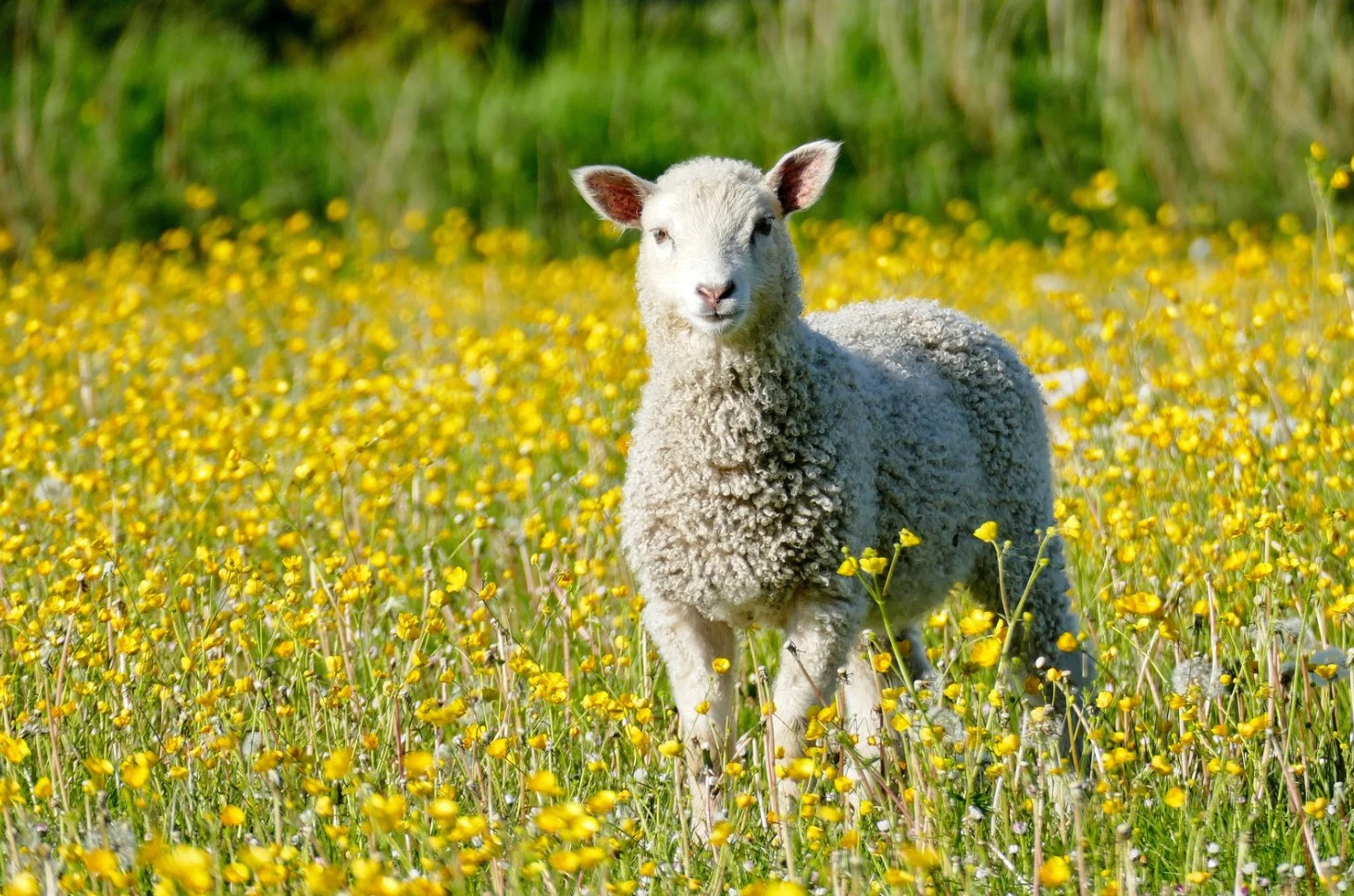
Breeding And Reproduction İn Sheep
Sheep are one of the oldest domesticated animals and have been bred for a variety of reasons for thousands of years. One of the most important aspects of sheep farming is breeding and reproduction. Sheep farmers take great care to ensure the health and well-being of their herds, and proper breeding is essential in maintaining the quality of the flock.
Breeding Methods: There are a number of breeding methods used in sheep farming, including natural breeding, artificial insemination, and embryo transfer. Natural breeding involves allowing a ram to mate with a ewe during the breeding season, which typically occurs in the fall. Artificial insemination involves collecting semen from a ram and transferring it to a ewe using a catheter or other method. Embryo transfer involves collecting embryos from a donor ewe and transferring them to recipient ewes. This is often used to propagate superior genetics.
- Factors Affecting Breeding: A number of factors can affect breeding in sheep, including age, nutrition, and health. Ewes should ideally be bred at least once a year, and care should be taken to ensure that they are in good health and have adequate nutrition.
- Gestation and Lambing: The gestation period for sheep is around 145 to 150 days, and during this time, the ewe should be monitored closely to ensure that she receives sufficient nutrition and care. Lambing usually occurs in the spring, and farmers often take extra precautions during this time to ensure that the ewe and her offspring are safe and healthy.
- Breeding Selection: Selecting the right breeding animals is crucial in maintaining a healthy, productive flock. Farmers should look for animals with desirable traits such as good temperament, hardiness, and disease resistance.
In conclusion, breeding and reproduction are essential parts of sheep farming. Farmers must carefully choose breeding methods, monitor ewes during gestation and lambing, and select animals with desirable traits. By taking these steps, farmers can maintain a healthy and productive flock for years to come.
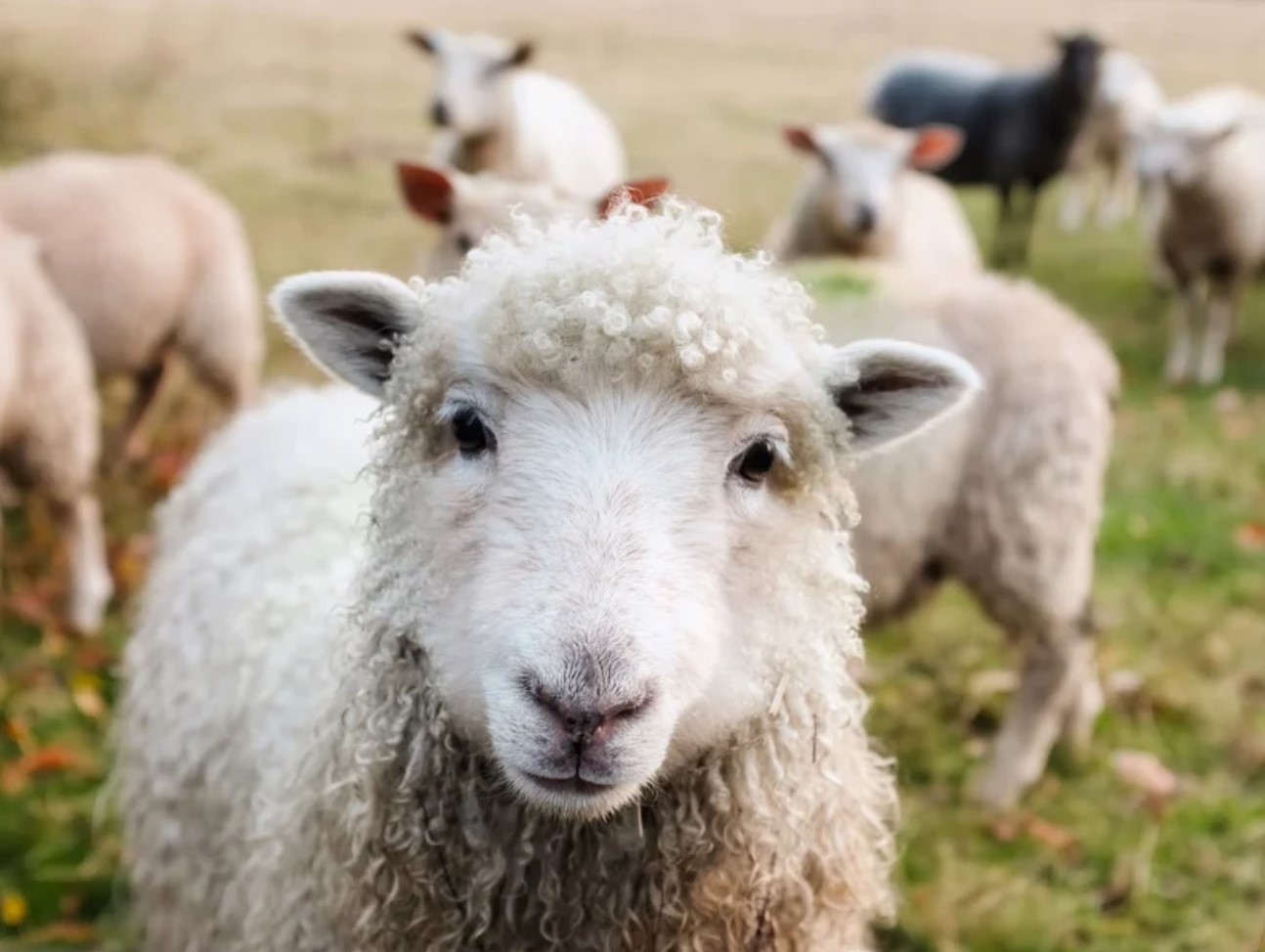
Herd Management And Grazing Strategies
Effective herd management and grazing strategies are the key to keeping your sheep healthy and productive. Sheep are social animals that thrive in flocks, so it’s important to pay attention to their needs and behavior to ensure their well-being. Successful management techniques involve regular monitoring of their grazing areas, feeding and watering schedules, and adequate shelter.
One effective strategy is rotational grazing, which involves moving the flock to different paddocks or pastures periodically. This helps to prevent overgrazing, reduce parasite pressure, and increase pasture productivity. Studies have shown that rotational grazing can significantly improve the quality of the forage and reduce the risk of soil erosion.
- Another important aspect of herd management is providing adequate nutrition. Sheep have unique dietary needs and require a balanced ration of protein, energy, minerals, and vitamins. The type and quality of forage available, as well as the age and reproductive status of the sheep, will impact their nutritional requirements.
- It’s also essential to provide clean water at all times, especially during the hot summer months when sheep can become dehydrated quickly. Water quality is important too, as contaminated water can lead to health problems and reduced productivity.
| Benefits | Explanation |
|---|---|
| Improved forage quality | Rotational grazing and other management techniques can help to improve the quality and quantity of forage available to the sheep. |
| Reduced parasite pressure | Effective grazing strategies can help to reduce the prevalence of parasites, which can negatively impact sheep health and production. |
| Increased productivity | Well-managed flocks tend to be more productive, with higher weight gains, better wool quality, and increased reproductive success. |
Overall, effective herd management and grazing strategies are essential for the health, productivity, and profitability of your sheep flock. By understanding their unique needs and behavior, you can provide them with the best possible care and ensure their success on your farm.
Wool Production And Processing
Sheep have been domesticated for thousands of years for their wool, which provides one of the most versatile and sustainable materials for clothing and textile production. The wool production process involves several important steps, including shearing, sorting, cleaning, carding, spinning, and weaving. To produce high-quality wool, it is important to select the right breeds of sheep, manage them properly, and process the wool carefully to preserve its natural qualities and characteristics.
There are various types of wool, each with its own unique properties and uses. Some of the most popular types of wool include merino, cashmere, mohair, and angora. Merino wool, for example, is known for its fine texture and softness, while mohair is prized for its sheen and durability. Each breed of sheep produces a different type of wool, depending on its genetics, diet, and environmental conditions.
- Sheep wool is an excellent renewable resource that helps reduce our dependence on synthetic materials that can harm the environment.
- Wool is a natural insulator that helps regulate body temperature and wick away moisture.
- Wool can also be treated to be flame-resistant, water-repellent, and anti-microbial.
| Wool Processing Steps | Description |
|---|---|
| Shearing | The process of removing the wool fleece from the sheep’s body using electric or manual clippers. |
| Sorting | The wool is sorted by color, texture, and quality to ensure that it is of the highest grade. |
| Cleaning | The wool is washed to remove dirt, grease, and impurities that can affect its quality and appearance. |
| Carding | The wool is carded, or combed, to separate the fibers and make them more uniform in length and thickness. |
| Spinning | The wool is spun into yarn using a spinning wheel or spindle, which twists the fibers together to create a strong and durable thread. |
| Weaving | The yarn is woven into fabric using a loom or other weaving machine, which creates a tight and uniform weave for optimal warmth and comfort. |
Despite its many benefits, wool production and processing can be a complex and challenging business. Farmers and manufacturers must navigate a range of factors, including animal care, environmental regulations, market demand, and supply chain logistics, in order to produce and distribute high-quality wool products that meet consumer needs and expectations. However, with careful planning, strategic partnerships, and a commitment to sustainability, wool producers can create a thriving and profitable business that benefits both the people and the planet.
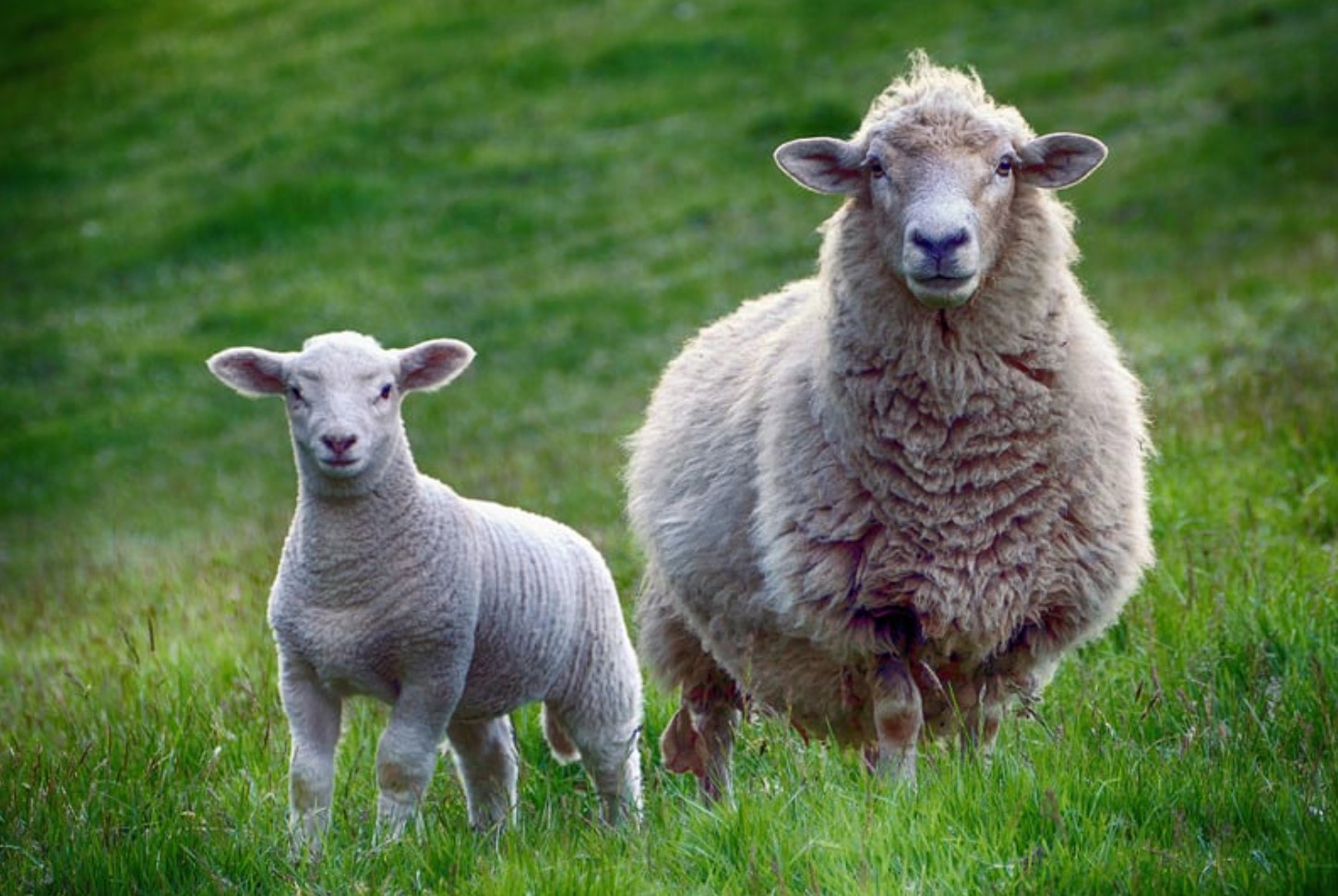
Meat Production- Breeds And Methods
If you’re looking to raise sheep for meat, understanding the different breeds and methods of production can help you make informed decisions to maximize your yield and profitability.
Meat Production Breeds: While there are many breeds of sheep suitable for meat production, some are particularly favored for their qualities. For example, the Hampshire and Suffolk breeds are known for their large size and lean meats, making them ideal for commercial farming. The Dorper breed, originating in South Africa, is also well-suited for meat production due to their ability to thrive in arid environments and resistance to parasites.
Meat Production Methods: There are several methods of sheep meat production, each with their own advantages and disadvantages. Intensive farming involves confining sheep to small spaces and force-feeding them a high-grain diet to fatten them up quickly. This can result in higher yields but also increases the risk of disease and cruelty. Alternatively, extensive farming involves allowing sheep to roam and graze on natural vegetation, producing leaner, healthier meat but with lower yields.
Sustainability and Ethics: As with any form of animal agriculture, it’s important to consider the sustainability and ethics of sheep meat production. Avoiding intensive farming methods and choosing breeds suited to your local environment can help reduce the environmental impact of your operation while providing a higher quality of life for your animals. Additionally, choosing to raise sheep for meat can help promote more sustainable land use practices and provide a source of high-quality, locally sourced protein for your community.
Milk Production And Dairy Products
Sheep have been domesticated for thousands of years and are a valuable source of milk, meat, and wool. While meat production may be the most well-known use for sheep, milk production from sheep is also an important industry. In fact, sheep milk is higher in many essential vitamins and minerals than cow’s milk, making it a popular choice for those looking to increase their nutrient intake.
Sheep milk also has a higher fat content than cow’s milk, which makes it ideal for producing rich and creamy dairy products such as cheese, yogurt, and ice cream. Sheep milk cheese is particularly popular in countries such as France, Italy, and Greece, where it has been produced for centuries. The distinct taste and texture of sheep milk cheese make it a gourmet product that is highly sought after by food enthusiasts.
- Sheep milk is also used to make other dairy products such as butter and cream. However, due to the high cost of producing sheep milk, these products are less common than cheese and yogurt.
- Sheep milk yogurt is another popular product that can be easily made at home using a yogurt maker or other equipment. Sheep milk yogurt has a tangy flavor and creamy texture that is similar to Greek yogurt.
- One of the unique qualities of sheep milk is its ability to be used as a replacement for cow’s milk in many recipes. This is particularly useful for individuals who are lactose intolerant or have an allergy to cow’s milk.
While sheep milk dairy products may not be as readily available as cow’s milk products, those who have the opportunity to taste them often find them to be superior in flavor and nutrition. As the demand for alternative dairy products continues to grow, it is likely that sheep milk and its byproducts will become increasingly popular in the coming years.
Sheep Farming As A Business- Opportunities And Challenges
Sheep farming has been an important aspect of agriculture for centuries. However, with the changing times, the challenges and opportunities in the sheep farming business are also evolving. If you’re considering entering the sheep farming industry as a business, it’s important to understand the opportunities and challenges involved.
Opportunities:
- High demand for sheep products such as meat, milk, and wool.
- Sheep require relatively low cost inputs and maintenance compared to other livestock.
- The sheep industry provides diverse opportunities for producers to specialize in specific areas, such as meat or wool production.
- The ability to work with nature, using grazing strategies to manage pasturelands and natural landscapes.
Challenges:
- Predator control to protect the sheep from wild animals like wolves, coyotes, and bears. This can be expensive and time-consuming.
- Environmental factors such as climate change and droughts that affect the availability and quality of pasturelands and water.
- Disease and health management since sheep are susceptible to several diseases, and maintaining their health is crucial to ensure a profitable business.
- Sheep farming requires commitment, consistency, and patience. Success in this business depends on the dedication of the farmer.
Despite the challenges in sheep farming, many farmers have found great success in the industry. By focusing on producing high-quality products, strategizing health management, optimizing grazing strategies, and being committed to learning and improvement, sheep farming as a business can be profitable and sustainable.
Sheep Diseases- Prevention And Treatment
Sheep have been domesticated for thousands of years, and play an important role in agriculture across the world. However, like all animals, sheep are susceptible to diseases that can have a negative impact on their health and the health of the herd. Preventing and treating these diseases is crucial for maintaining a healthy flock.
Preventing Sheep Diseases: There are several key measures that can be taken to prevent diseases in a sheep herd. One of the most important is maintaining proper hygiene. This includes regular cleaning of facilities, as well as ensuring that animals are kept clean and dry. Another important prevention measure is isolating sick or infected animals from the rest of the herd, in order to prevent the spread of disease.
- Other preventive measures that can be taken include:
- Vaccinating animals against common diseases
- Providing proper nutrition and adequate water sources
- Practicing proper ventilation and temperature control in facilities
- Implementing herd health plans and monitoring animals for signs of illness
Treating Sheep Diseases: When disease does occur in a sheep herd, prompt treatment is essential for minimizing the spread of illness and reducing the risk of serious health complications. Treatment options may vary, depending on the type and severity of the disease. In some cases, antibiotics or other medications may be prescribed. In others, supportive care such as fluids, nutrition, or rest may be necessary.
| Disease | Symptoms | Treatment |
|---|---|---|
| Scrapie | Behavioral changes, weight loss, loss of coordination | No cure, but proper flock management can control spread |
| Footrot | Lameness, swelling, and infection in the feet | Antibiotics and proper foot care |
| Haemonchosis (barber’s pole worm) | Anemia, weight loss, edema | Dewormers and supportive care |
Preventing and treating diseases in a sheep flock is an ongoing process that requires careful attention and management. By maintaining proper hygiene, practicing preventive measures, and treating illnesses promptly, sheep farmers can help ensure the health and productivity of their herds.
Sheep İn Culture- Art, Literature, And Folklore
Sheep have been an important part of many cultures for centuries, playing a significant role in art, literature, and folklore. Their gentle nature and usefulness have made them a subject of fascination and inspiration for artists and writers alike. Sheep have been depicted in various art forms, from paintings to sculptures, and even in stained glass windows.
In literature, sheep have been used as symbols of purity, meekness, and sacrifice. Perhaps the most famous example is the story of the shepherd David, who became the king of Israel according to the Bible. In other cultures, sheep have been associated with fertility and prosperity.
Sheep have also been the inspiration for many folk tales and myths. The legend of the Golden Fleece, for instance, tells the story of a hero who has to capture a magical ram with golden wool. In Greek mythology, the god Apollo is associated with sheep as well, and the Roman god Jupiter is often depicted holding a ram.
- Many cultures have also developed various customs and traditions associated with sheep. In some parts of the world, sheep are still used for sacrifice during religious ceremonies. In other places, sheep are used for wool, milk, and meat production.
- Their wool, especially, has been a valuable commodity throughout history. In medieval times, wool was considered a luxury item and was often used for clothing worn by the wealthy. Today, sheep’s wool is used for a variety of products, from clothing to furniture upholstery.
- Despite their importance in culture, however, sheep face many challenges, and their future is uncertain. Sheep farming is becoming less profitable due to increasing costs and competition, and climate change is making it more difficult for them as well. Conservation efforts are underway to protect wild sheep populations and to preserve the genetic diversity of domestic sheep breeds.
Sheep have left their mark on human history and continue to provide inspiration for artists, writers, and even scientists. They show us the importance of respecting and valuing the animals we share our planet with.
Future Of Sheep- Conservation And Sustainability
When we think of the future of sheep, we think of conservation and sustainability. Sheep have been a crucial part of human society for centuries, and it’s important that we continue to protect and care for them for generations to come.
Conservation efforts for sheep are vital in ensuring their survival. Many sheep breeds are considered endangered or at risk due to decreasing numbers. The loss of genetic diversity can have a negative impact on the breed’s ability to adapt to changing environments and resist diseases. One way to promote conservation is through breeding programs that aim to preserve rare breeds. Another approach is through habitat conservation, as sheep rely on specific environments for grazing and shelter.
- Sheep breeds considered endangered or at risk
- Loss of genetic diversity
- Breeding programs to preserve rare breeds
- Habitat conservation for grazing and shelter
Sustainability is another important consideration for the future of sheep. As with any animal agriculture, it’s essential that we find ways to balance the needs of the environment, the sheep, and the people who rely on them for food and other products. One way to promote sustainability is through responsible herd management practices, such as rotational grazing, which allows pastures to recover between grazing periods. Recycling sheep waste can also reduce the environmental impact and provide valuable fertilizer for crops. Additionally, the use of alternative energy sources can reduce reliance on fossil fuels and lower carbon emissions.
- Balance between environment, sheep, and society
- Responsible herd management practices
- Recycling sheep waste for fertilizer
- Use of alternative energy sources
The future of sheep relies on our commitment to conservation and sustainability. As we continue to rely on sheep for food, wool, and other products, it’s crucial that we prioritize their welfare and protection. Through responsible practices and conservation efforts, we can ensure that these animals remain a valuable part of our society for years to come.
| Conservation | Sustainability |
|---|---|
| Promote breeding programs to preserve rare breeds | Implement responsible herd management practices like rotational grazing |
| Focus on habitat conservation for grazing and shelter | Recycle sheep waste to reduce environmental impact |
| Increase awareness of the importance of genetic diversity | Use alternative energy sources to reduce reliance on fossil fuels |